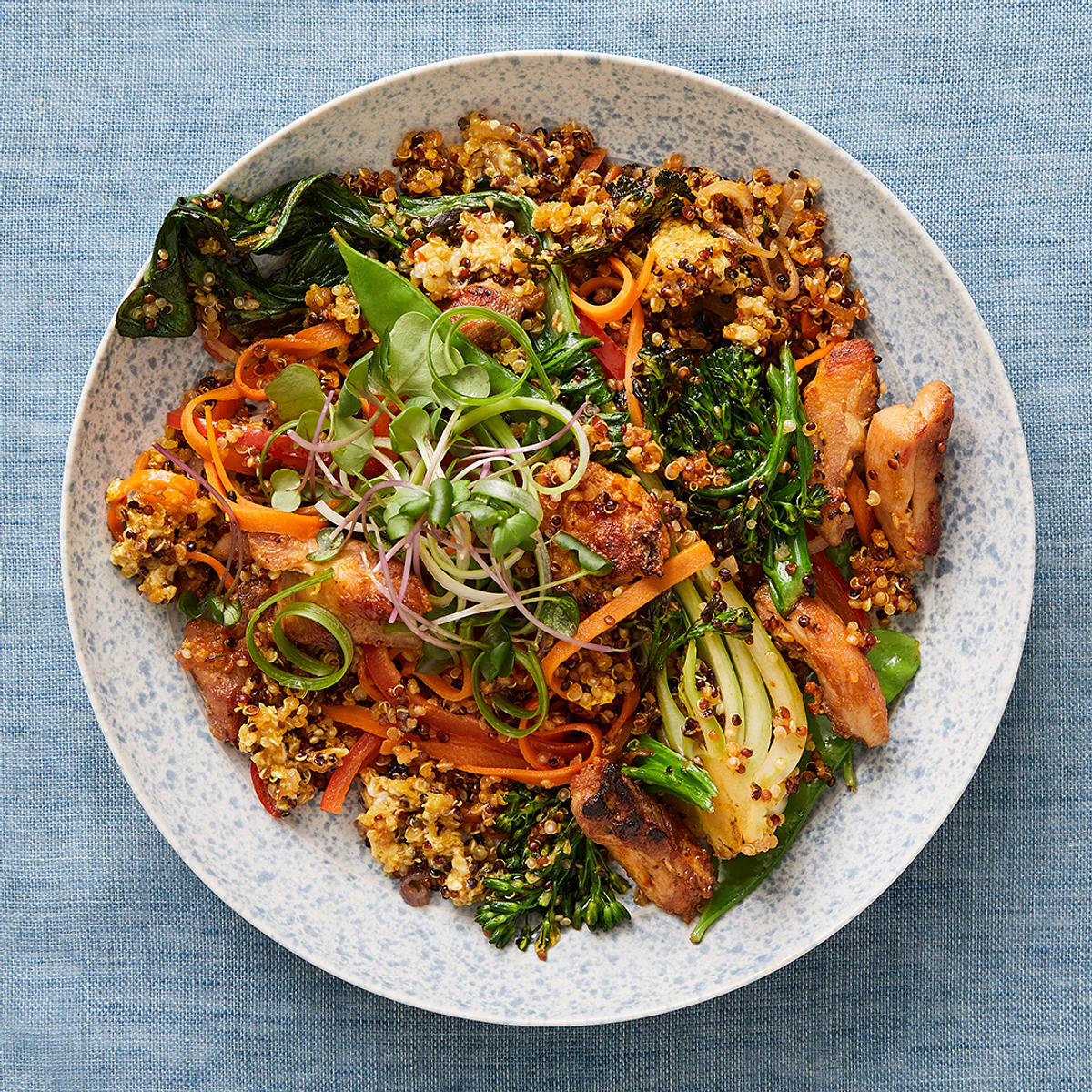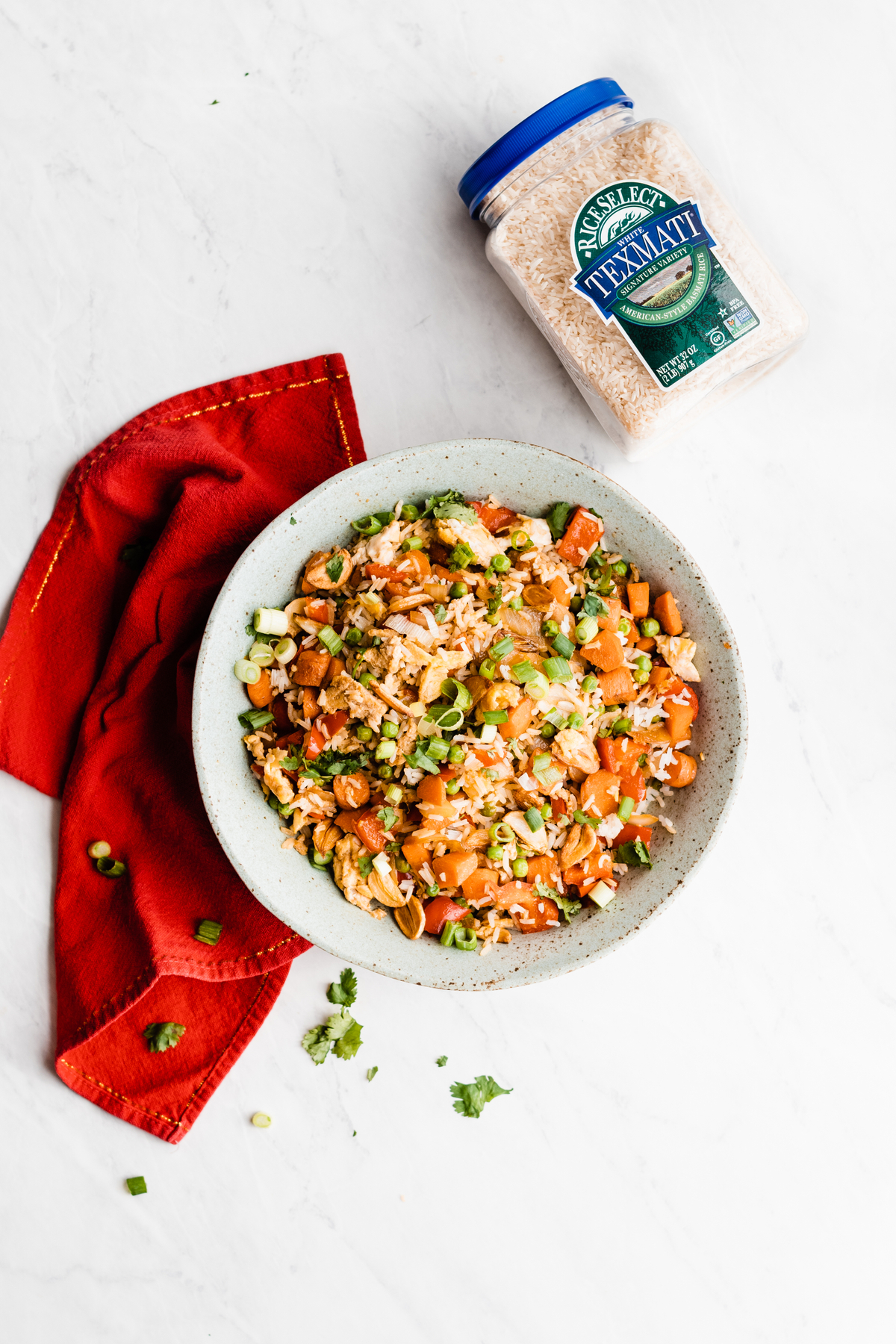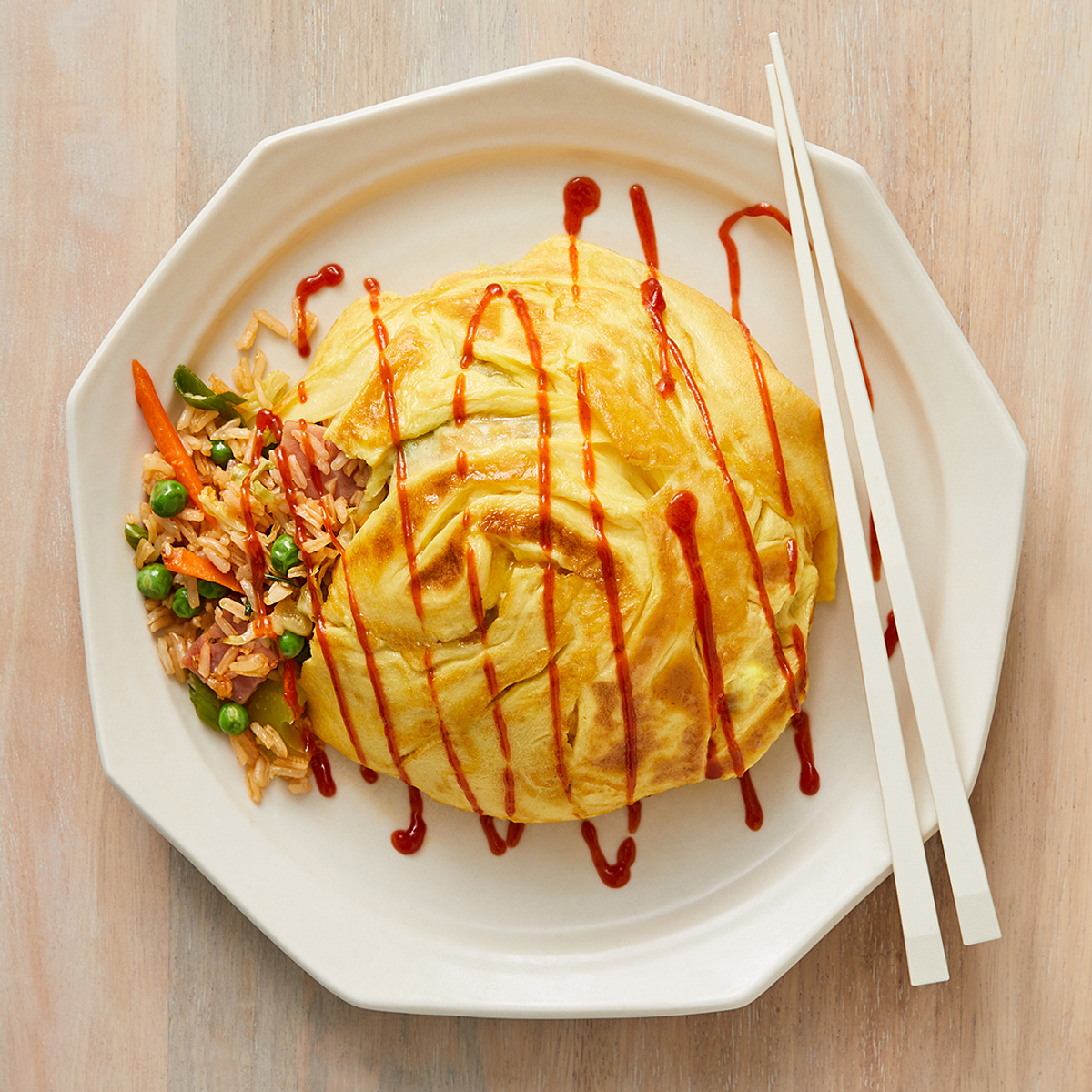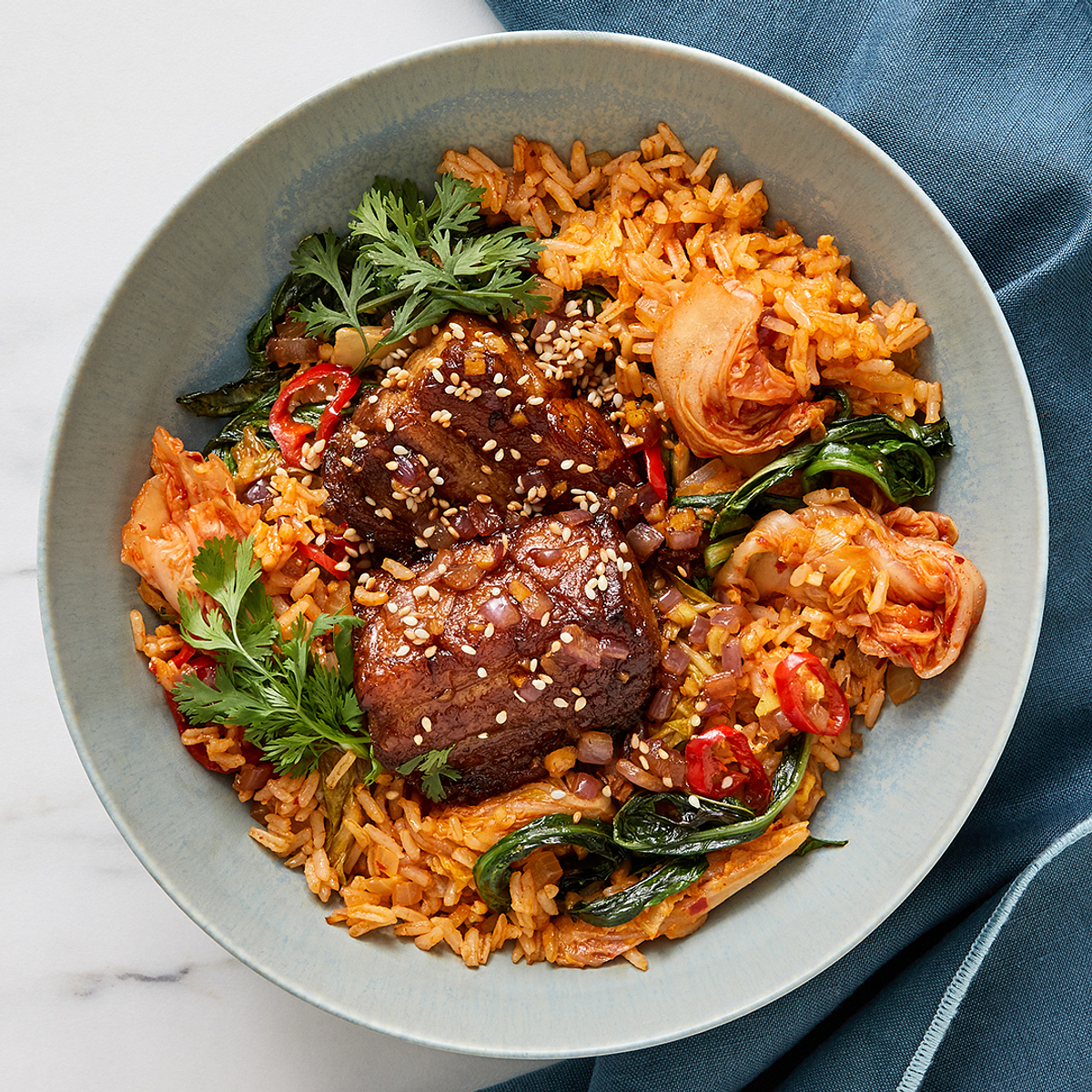With its humble beginning as a simple yet comforting way to use up leftovers, when made correctly, fried rice can be a powerhouse of flavor and it’s endlessly versatile as a canvas for a wide variety of ingredients. Follow my culinary secrets and I’ll show you how to give the ordinary version a sophisticated and unforgettable touch.
A Worldwide Sensation
Stir-fried together in one pan or wok, fried rice is essentially a simple combination of cooked rice with vegetables, meats and seasonings or other aromatic ingredients. I think the true testament to just how delicious this dish can be is how widespread it has become. With its origins in China during the Sui Dynasty, this incredible meal has worked its way into the traditional cuisine of many countries throughout Asia and Latin America for any meal of the day. Just take a look at Japanese Omurice, Indonesian Nasi Goreng or Peruvian Arroz Chaufa.
Using Chinese fried rice as an example, I’d like to delve a bit deeper into the essential components first.
Essential Fried Rice Elements
Fried rice is one of the best recipes for experimenting with ingredients, flavors and textures. When you learn the essentials to make it at home, the meal possibilities are endless. I’ve even included one of my favorite simple recipes for you to use as a guide and create your own masterpiece.
Starting with these four components as a base, you can master any fried rice dish.
Cooking Oil
Rice
Aromatics (spices, vegetables, sauces,etc.)
Protein and Vegetables
Cooking Oil and Smoke Points
Right after a good quality non-stick pan or wok, you’ll need to be using a cooking oil that can withstand the high heat of the pan or wok. And, that means choosing the right oil is essential to avoid it overheating and burning beyond its smoke point.
Oils and fats come from natural products, and those with a higher smoke point interact better with heat as they have undergone a larger refinement process. Each oil variety has a time and place, for example, unrefined oils such as extra virgin olive oil have more flavor and are wonderful for dressings and dipping, but they have a lower smoke point.
For fried rice, the best option is to choose one of these oils with a higher smoke point that can withstand the heat without giving the dish a burnt flavor.
Peanut Oil (450°F)
Sesame Oil (410°F)
Canola Oil (400°F)
Avocado Oil (375°F)
Another thing to keep in mind is the flavor of your oil. When I want to let the ingredients shine in my stir fry, I choose canola oil for its neutral flavor.
Choosing Rice
To ensure the best results in any fried rice dish, I suggest a long-grain rice variety that has been completely cooled. In contrast to short-grain rice like sushi rice, long-grain rice contains less starch, meaning it cooks up lighter and fluffier without clumping together.
My absolute favorite varieties are exclusive to RiceSelect®: Jasmati® Rice and Texmati® Rice. These two rice options are pleasantly aromatic and made from an agricultural hybridization of long-grain white rice and Thai Jasmine Rice or Basmati Rice. The individual grains remain firm and distinct, ideal for stir-fried flavor in every bite.
The key is finding options that contain little starch, so a fried rice dish might be made with a multi-grain blend like this recipe for Vegetable Fried Rice created by Food Heaven made with RiceSelect® Royal Blend®.
Aromatics
Aside from using a fragrant rice choice, there are many ways to add incredible flavor to your dish, and that’s where aromatics come into play. Cooking oil is a great place to infuse flavor with spices, ginger, red pepper flakes, onions or garlic like in this Garlicy Vegetable Fried Rice recipe.
I also enjoy sautéing vegetables with sauces such as soy sauce, oyster sauce, sesame oil, fish sauce, or tamari. You may also fold in fresh herbs and vegetables like scallions, basil, green onions, chili and cilantro or drizzle a special spicy sauce on top like in this recipe for Fried Rice Recipe with a Japanese Omelet.
Add Quality Protein and Vegetables
When it comes to what kinds of vegetables and proteins can be added into fried rice, the options are truly endless. Use sirloin steak or other flavorful beef and pork cuts, chicken breast or fried chicken strips, or incorporate seafood such as tuna, crab, shrimp and more. If you prefer a plant-based option try tofu, tempeh or even jackfruit.
The beauty of fried rice is the vast amount of fresh or frozen vegetables that can be utilized. Use your favorite seasonal produce or crunchy options such as cauliflower, cabbage, snow peas or broccoli. To give my meals a taste of something new, I look to international classics for inspiration like in this Kimchi Fried Rice recipe topped with Filipino Pork Sisig. Get inspired to create something wonderful using quality proteins and vegetables.
Jasmati® Fried Rice Recipe
Use this simple fried rice recipe as a guide to really let your creativity shine. This is one of my favorite easy to make recipes that is a perfect canvas for getting creative in the kitchen using all kinds of aromatics, vegetables and proteins.
Ingredients:
3 cups cooked, cooled Jasmati® Rice (sub Texmati® Rice if desired)
3 tablespoons peanut oil, divided
2 eggs
¼ teaspoon salt
3 green onions, sliced
1 cup chopped (shrimp, chicken, or pork)
1 cup snow peas, cut diagonally
½ cup cashews, roasted
2 tablespoons soy sauce
Instructions
Beat eggs with salt, heat 1 tablespoon oil in large skillet or wok. Add onions and eggs. Stir-fry until set. Remove from pan.
Heat another tablespoon of oil. Add shrimp, chicken or pork; stir fry 5 to 10 minutes are until cooked through. Add snow peas and cashews; stir fry an additional 2 minutes, then remove from pan.
Add last tablespoon of oil and heat. Add rice, stirring to heat. Stir in soy sauce, shrimp mixture, and eggs.
Stir mixture gently to combine all ingredients and heat through.
I’d love to see a bit of spontaneous brilliance in your kitchen, maybe try an Orzo recipe, maybe a Shrimp and Rice recipe or one of @RiceSelect's Pearl Couscous recipes or an Arborio Rice recipe, connect with me on social media by tagging your recipes with @RiceSelect.




